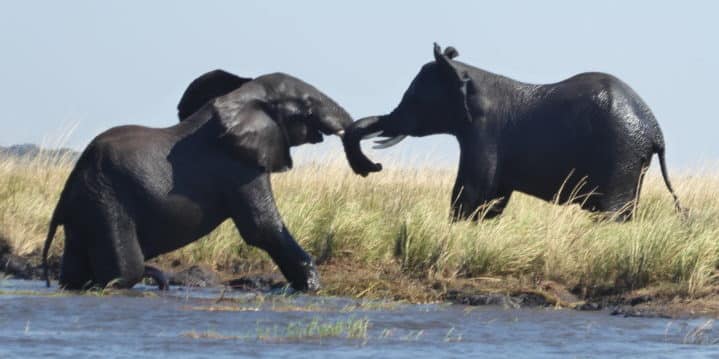
Three couples, all of us friends from Tucson, set off in June on an ambitious African safari that took us to Tanzania (the Serengeti, Ngorongoro Crater and Tarangire National Park); Kenya; Zimbabwe; Zambia; and Botswana. It was an amazing trip. At times the overused word “awesome” applied. Each couple had private tents or cabins (bathrooms and showers en suite) in nine different mid-luxury safari camps or lodges. We packed a lot in—in fact, I would say too much, with not enough “down time” to soak in our experiences. Here’s what we experienced:
Cost
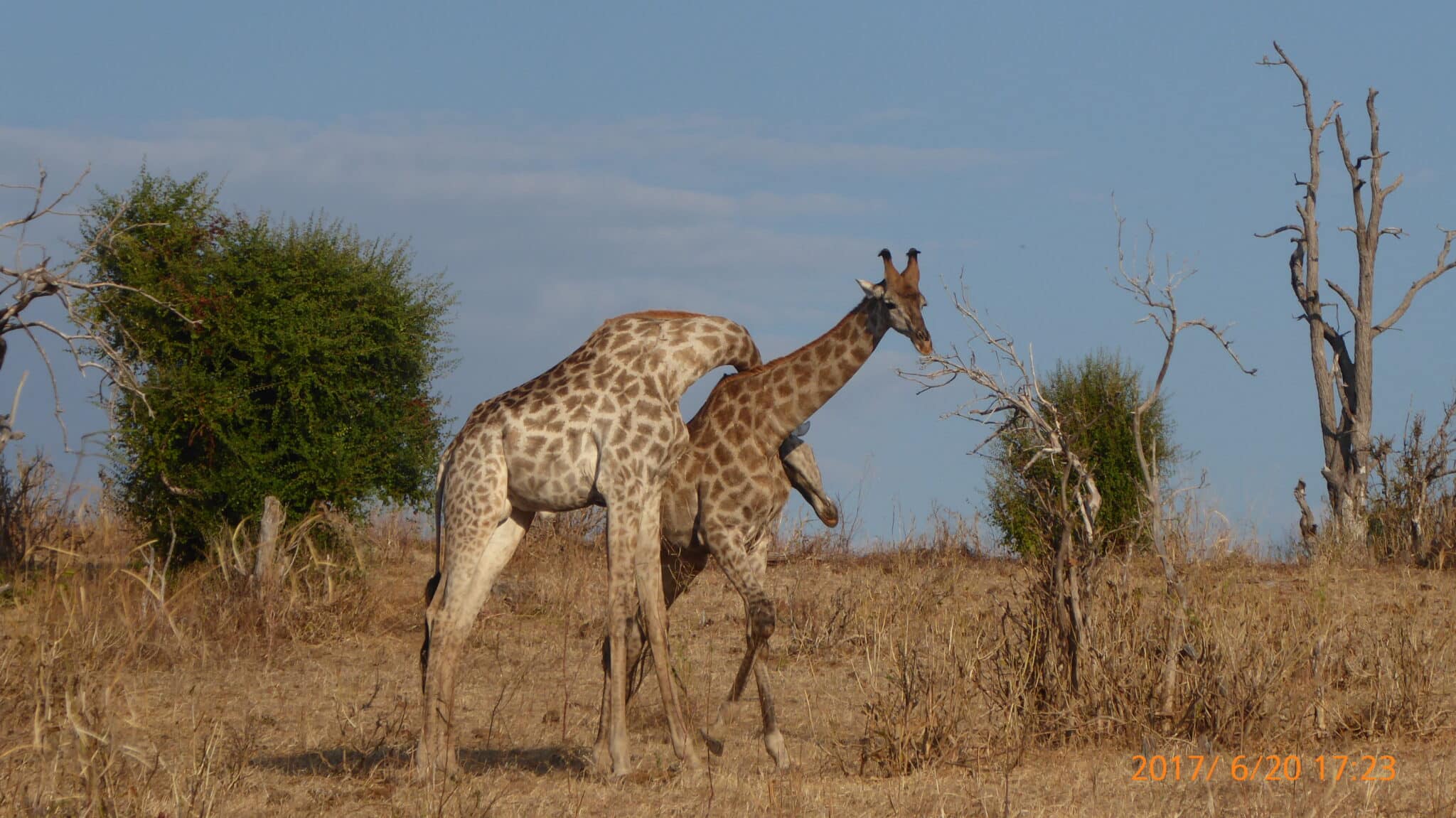
We booked a “mid-price” 15-day trip with a tour company, Born Free Safaris & Tours: $15,670 for two, which included accommodations with meals, all-day game drives in open vehicles with knowledgeable wildlife guides, airplane flights between countries, and various land transfers. Visas and side-trips added another $600. Add about $500 more for tips, including for the guides.
Then add another roughly $5,600 for economy-plus roundtrip air travel for my wife Nancy and me: Tucson to Kilimanjaro via Dulles and Amsterdam; return, Johannesburg to Tucson via Amsterdam and Dulles. The airfare included two mileage-and-fee upgrades to business class on KLM from Dulles to Amsterdam, and another $900 business-class upgrade for Nancy on the return 11-plus-hour Johannesburg-Amsterdam leg. Add in new lightweight safari clothing and pre-trip vaccinations, and the total for us both was about (drumroll please)…$24,000.
At these prices, we should be awed (and we were)

Oh the places you’ll go; the things you’ll see. Gazelles loping across a Serengeti plain, racing our open air Land Rover; lions feeding on a kill 40-feet away while jackals dart in and out trying to grab a bite, while a row of vultures, as nasty as you thought, linger patiently nearby. Teeming herds of zebras and wildebeest and preposterous-looking cape buffalo; of hyenas and more elephants than you can count. A leopard in a tree—and in a nearby tree, a dead gazelle that a leopard has somehow managed to loop over a high branch, for snacking?
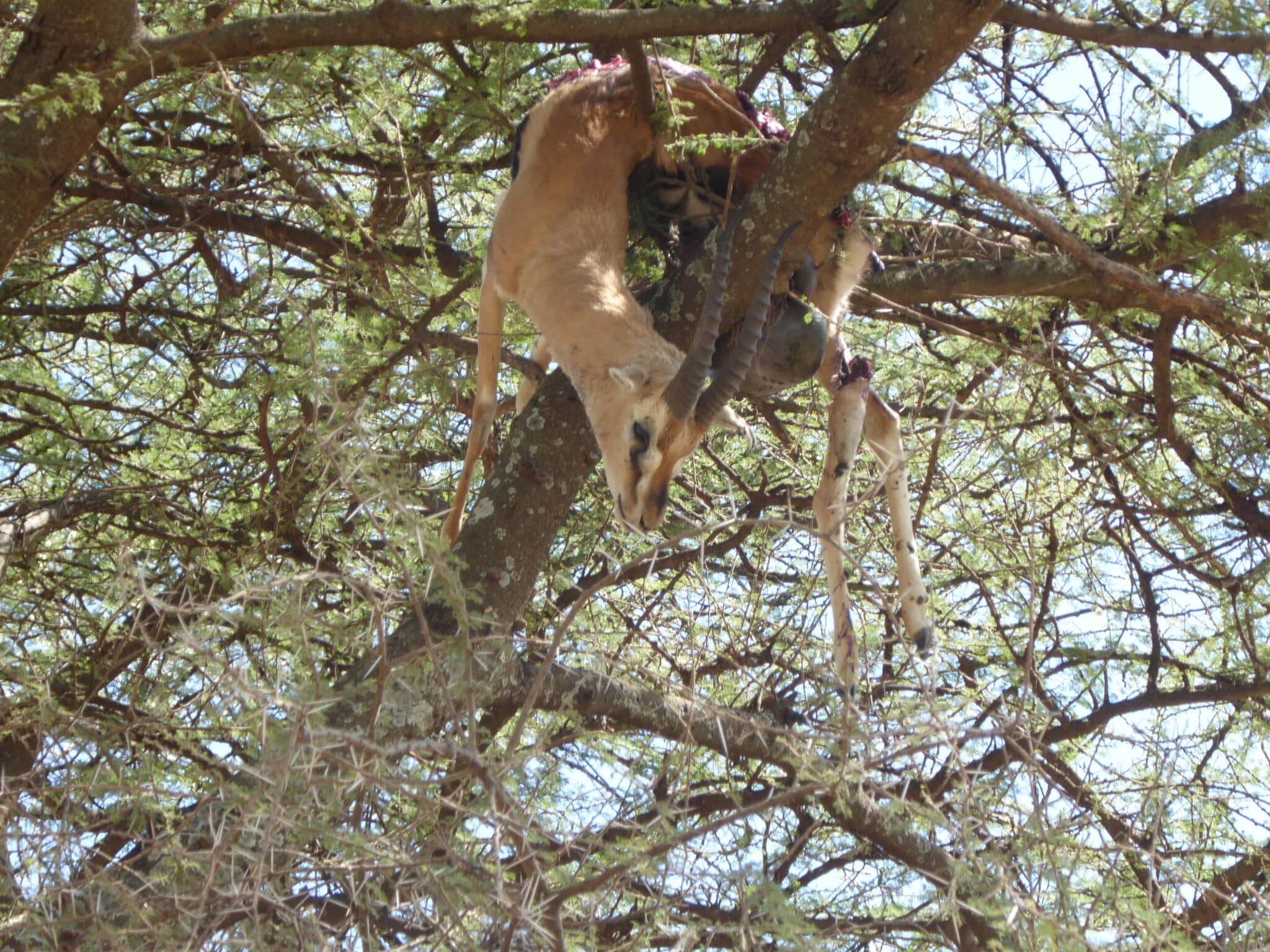
Hippos wallowing in muck, limbering forth in twilight to forage. Ostriches and eagles, goshawks and crakes and—on a dirt road in front of our six-passenger Land Cruiser—a black mamba snake, one of the world’s most poisonous, slithering through tall grass toward an acacia tree while birds shriek alarm to protect a nest.

On another day, a rare malachite kingfisher flits through reeds as a giant crocodile lurks in mud, gaping mouth open like a suitcase. Day after day we see such things in the endless sweep of grassland, savanna and plain and meandering rivers, and we’re flooded with awareness about the vital issues of African wildlife conservation.
Accommodations
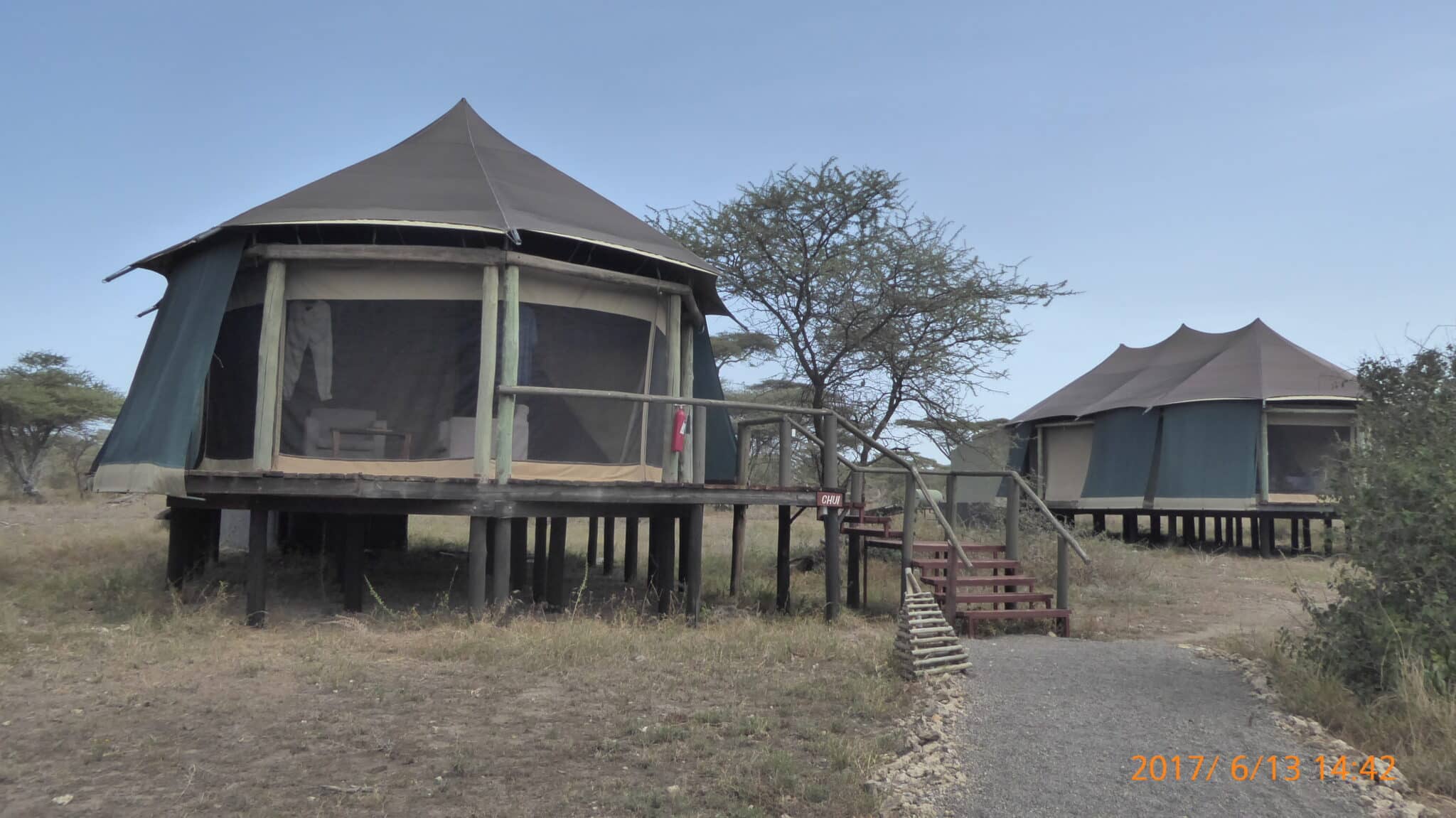
We know other friends who have done rugged safaris where guides pitch tents on a savanna and dig ditches for latrines. Since boot camp many years ago, I don’t even do “the bath-is-down-the-hall,” nor does my wife, so we approached this trip stipulating that roughing it would not do. We were generally pleased with the accommodations, which were luxury tented camps or remote lodges.
Private bathrooms had showers and plenty of hot water thanks to the remarkable spread of solar power in east Africa. We especially liked our two-night stay at the luxurious Elephant Camp near Victoria Falls in Zimbabwe. Another favorite was Lake Duluti Serena Hotel near Tanzania’s Tarangire National Park. All of our accommodations offered Wi-Fi service in the public areas, but it was always slow and sometimes down.
Dress
“You don’t look in the mirror on safari,” joked one of our merry group, Gail Cohn, but aside from dust accumulation on those long bouncing game-drives (“the African massage,” our guides said), we remained reasonably presentable, having followed advice to keep wardrobes simple—lightweight clothing, with luggage limited to 33 pounds on internal flights. Several of our lodges had free one-day laundry service.
Health
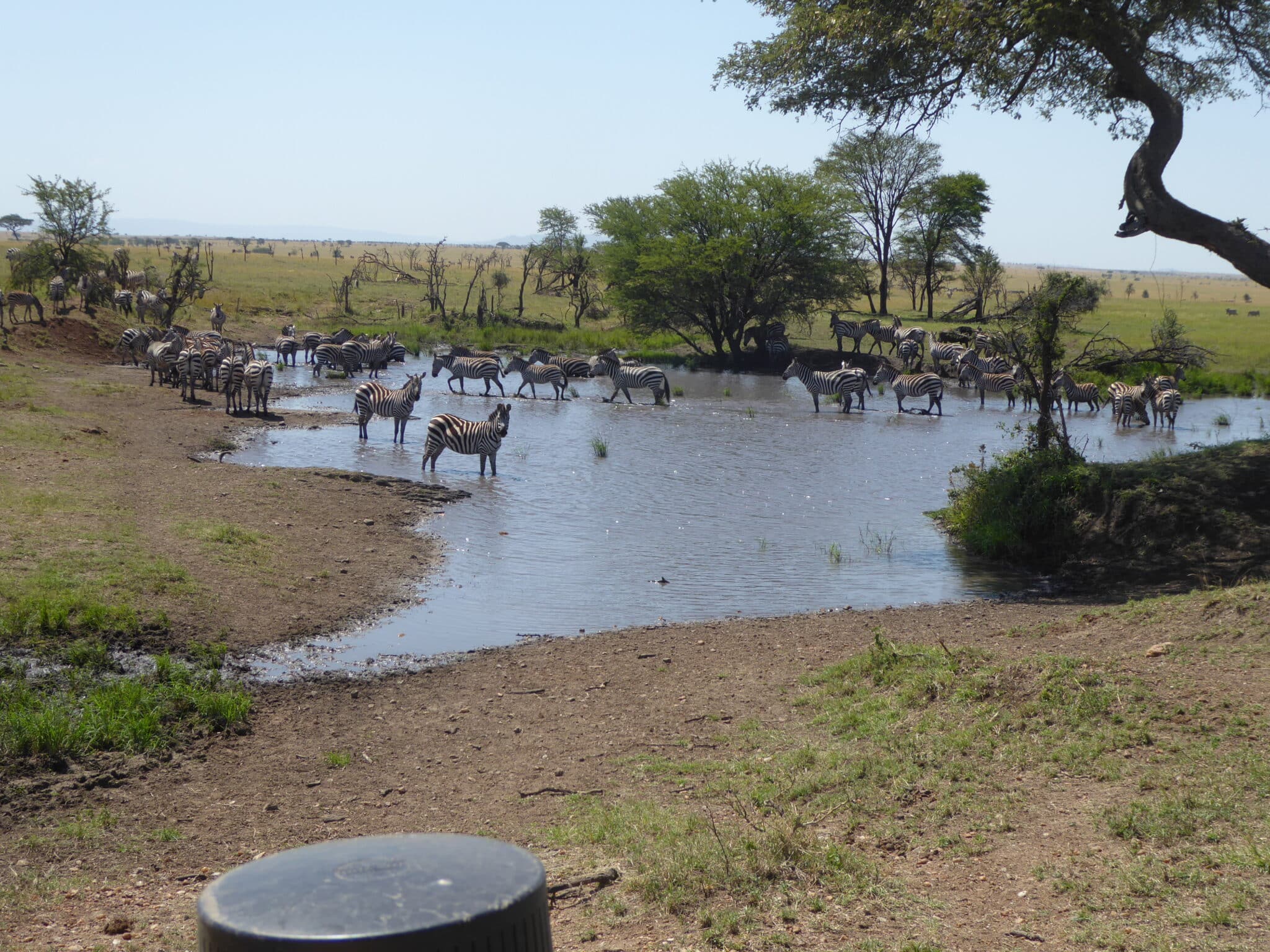
Except at accommodations in Botswana where pure water is a matter of pride, don’t drink tap water in east Africa. Avoid raw vegetables. Use bottled water (always provided), even to rinse a toothbrush. Pack an anti-diarrhea medicine like Imodium. You don’t want to be on a four-hour drive in the Serengeti—where leaving the vehicle is prohibited except for emergency stops right behind the vehicle—and…well, you know.
Pack antibiotics just in case. Malaria pills also are recommended, in prophylactic dose. A nurse friend of ours recommended Hepatitis A and B vaccinations, and our tour operator insisted that Kenya would require proof of yellow fever shots (it didn’t). We had planned well in advance, and found excellent service at the pharmacy at our local Safeway supermarket in Tucson. Safeway and other chains with pharmacy and clinical services—including Costco, Vons and Albertson’s—belong to SafeGard Travel Medicine. For a $49 fee, you complete an online medical form and receive a detailed report from a physician with smart recommendations for your specific trip, including vaccination requirements. We conveniently got those shots at our local Safeway pharmacy, at a cost far less than a standard doctor’s visit would have been.
Food

Always adequate, it ranged from fair to pretty good. Soups were uniformly excellent. At some of our lodgings, breakfast buffets were sumptuous, and all of these places sent us off on game drives with good boxed lunches.
Service was impeccable. I have never encountered such enthusiastic, cheerful and smart service employees as we encountered at our lodgings throughout this trip. Sub-Saharan Africa must depend mightily on tourism, and even in countries like Zimbabwe, which is essentially a corrupt failed state, the quality, courtesy and self-assurance of young Africans shines as bright as that equatorial sun.
Regrets

I had a few, including that we spent too much effort dashing around changing hotels when a better plan would have been to stay in place from time to time. I also regretted the time spent on a side-trip to the Sheldrick Wildlife Trust in Nairobi. Sheldrick does crucial, world-recognized work in elephant and rhinoceros rescue and rehabilitation, and in critically important anti-poaching efforts in east Africa—partly funded through a program in which supporters “adopt” a young rescue elephant. That’s wonderful—but frankly I found the Sheldrick elephant orphanage in Nairobi National Park to be basically a glorified petting zoo. While supporting Sheldrick’s work, I could have done without the trip to Nairobi specifically to visit the orphanage.
Back in Tanzania, I also bristled at the insistence of our guide (and our tour operator, Born Free Safaris) the we spend a morning on what was described as a “cultural tour” at a “Masai village”—admission price, $20 per person. I am no anthropologist, but I noted immediately that the village—with a score of thatched huts arranged neatly around a giant buffet table of native trinkets, did not appear to be actually occupied, the chorus of colorfully attired native singers and dancers who greeted us notwithstanding.
Where were the cooking implements? Where were the toilets? There was intense pressure on us to buy things (we resisted), but I did find one fellow who admitted that he and other “villagers” commuted to the location daily from the nearby city of Arusha, and that he was, not strictly speaking, a member of the Masai tribe—though he did have a wonderful singing voice. Our tour guide had scheduled us for another “cultural tour” to a village near Tarangire the next morning—and he bristled when I firmly resisted. One ersatz “roadside attraction” was more than enough.
Bottom line

The Serengeti of Tanzania is raw. Botswana, with its model democracy and vigilant anti-poaching efforts, is a well-maintained model for the future, while Zimbabwe is hopeless. Tanzania and the vast Serengeti? This is Hemingway’s Africa. Hemingway was a blowhard white hunter but he did know profound primordial beauty; he understood elemental Africa. The Serengeti will always tug at my heart. Could we lose this all to the criminal poachers, to the inexorable encroachment upon habitat of agrarian societies slouching their way to consumerism? Will my grandchildren know what I just saw? Like all of the great trips you take, you will spend years processing an African safari. Less than a month after we got back home with, frankly a sigh of relief, I am only at the start of this process. But I do know one thing: If there were a heaven, it would be full of elephants and lions and gazelles and hippos, and hilariously ugly cape buffalo, and crocodiles and storks and leopards in trees and, yes, jackals, too.
For more on an African safari with Born Free Safaris & Tours, visit safaris2africa.com.





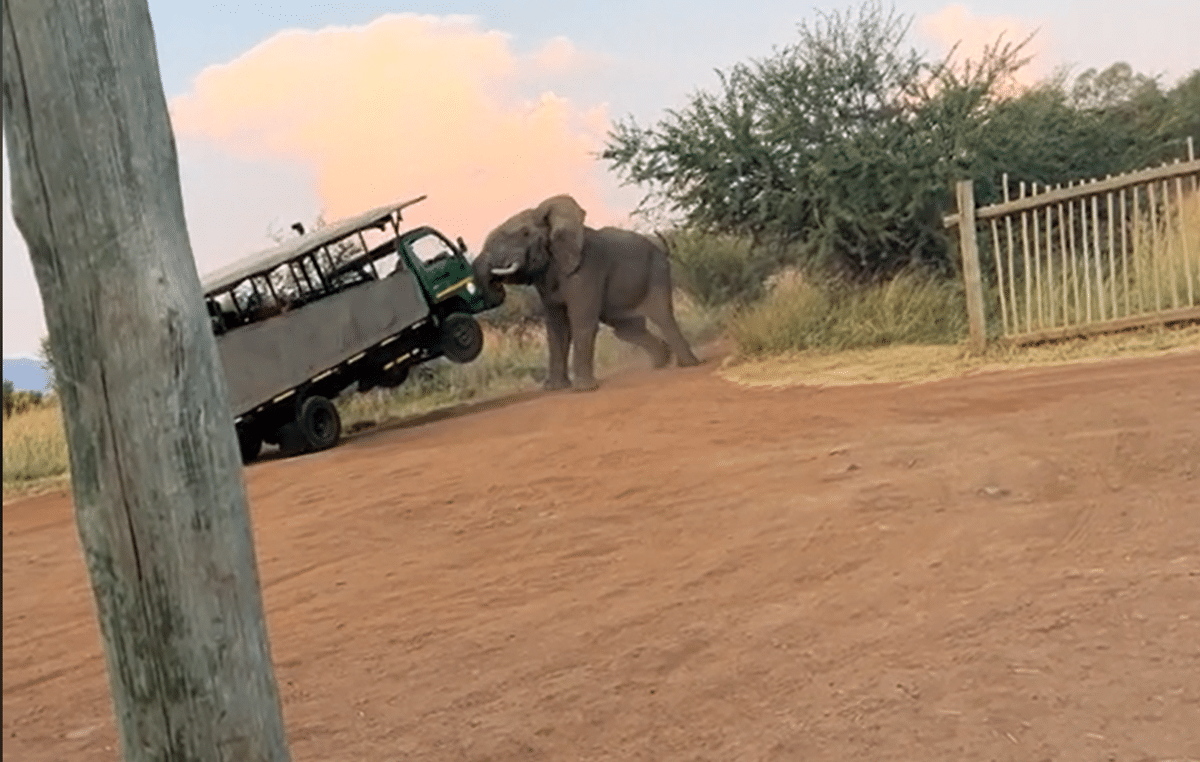


Amazing, Joe! You are the true definition of a pro. Thank you for taking the time to share your incredible trip with our community.
I think about my own adventures in Africa every day. Wish I’d written my own travelog and taken such great videos. Fabulous!
Exciting account, Joe! And amazing shots, Nancy! Maggy and I hope to visit Tanzania in 2018. The only thing you saw I don’t want to see is the black mambo snake. :) Linda L